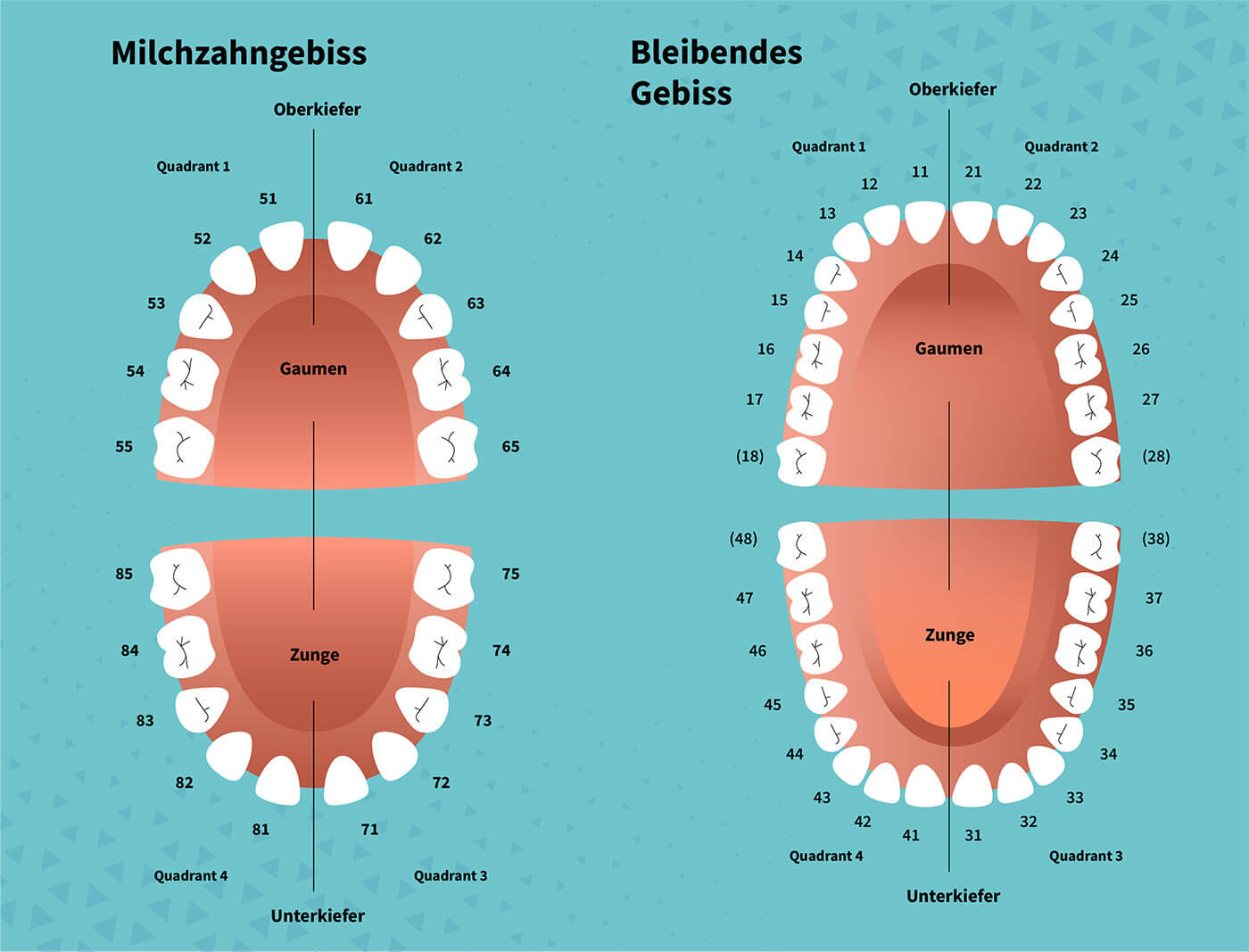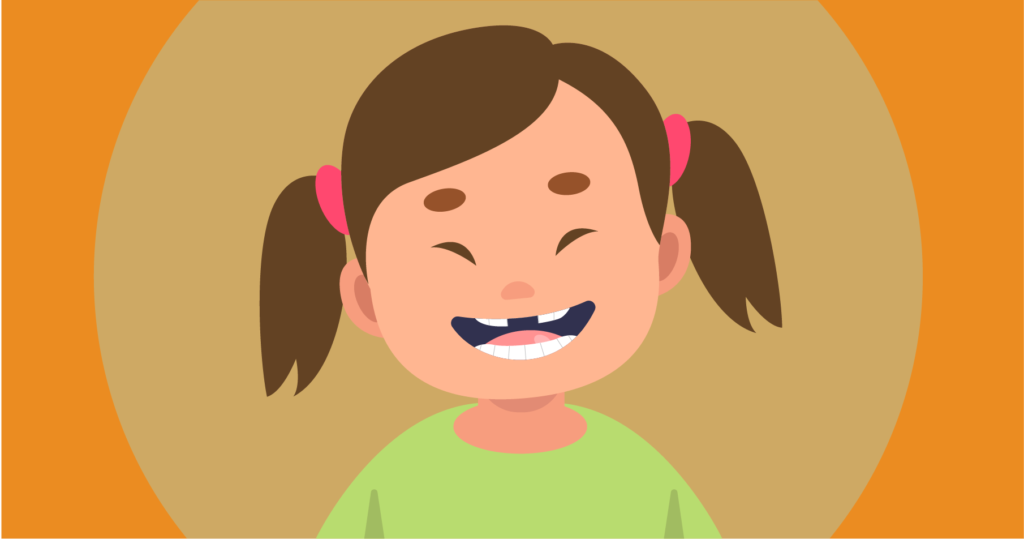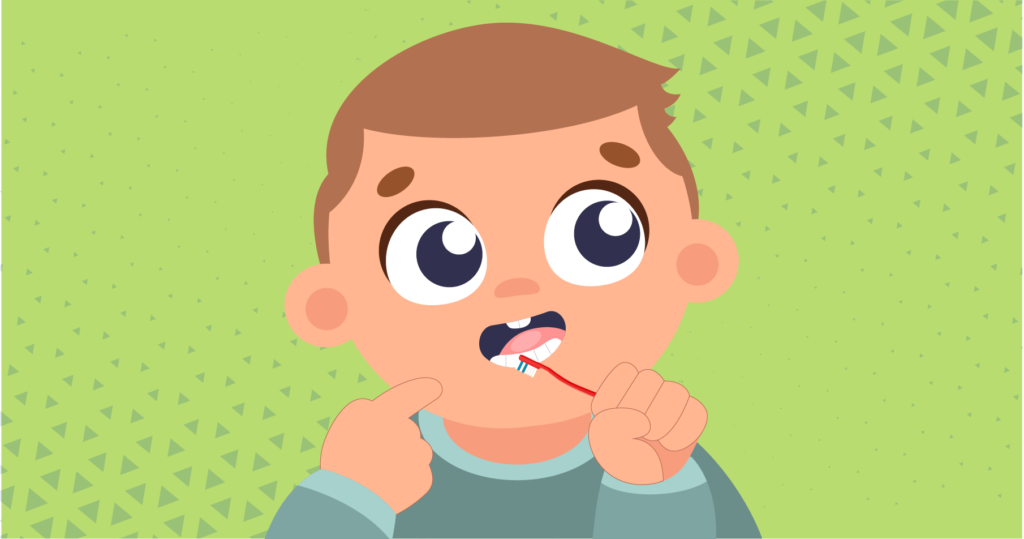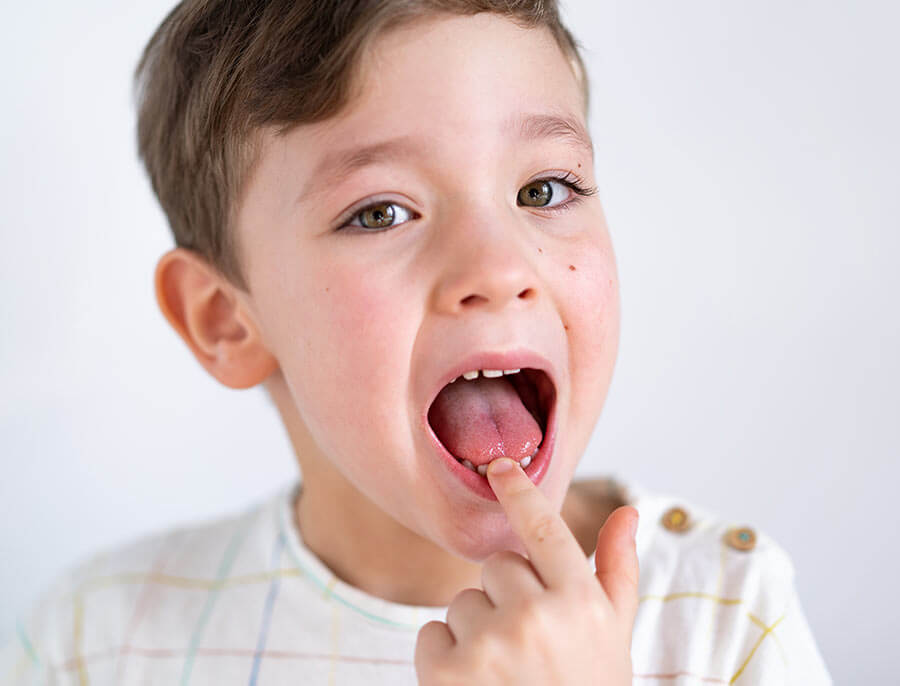When do the first teeth start to fall out?
When exactly the teeth fall out is individual from child to child. In general, it is true that the second teeth break through later, when the milk teeth also came rather late. It is therefore difficult to make a general statement. Nevertheless, many parents ask themselves: When do the first teeth start to fall out?
Basically, most children lose their first tooth around the age of 6 or 7. However, the change of teeth can also start a year earlier or later. When the 8th birthday approaches and there is still no sign of the milk teeth falling out, many parents worry. In most cases, these are unfounded. If the child turns 8 and has not yet lost a milk tooth at this point, you should still have the tooth growth assessed by a dentist as a precaution.
CASA DENTALIS Kids is open 365 days a year and has an emergency dental service for children, which is also open for you on Sundays and holidays.
In the waiting room specially designed for children with a pirate ship and in the practice rooms with our staff specialized in children: your child is in good hands with us.
Call now: 030 53 14 19 10
How long does the change of teeth take in a child?
The question of when milk teeth fall out cannot therefore be answered in a general way. The same applies to the duration of the change of teeth in children. The change of teeth takes place in several phases and can last from around the age of 6 to 13. By the age of 15 at the latest, all permanent teeth are normally fully visible. Only the wisdom teeth are still missing at this point. Your child therefore has plenty of time for the change of teeth. However, the process cannot be accelerated.
When the milk teeth fall out: Sequence of the change of teeth
The order in which teeth are changed also usually depends on the order in which the first teeth erupted.
Since this follows a certain pattern in most children, the change of teeth also follows this pattern.
The milk teeth often follow this sequence when they fall out:
| Age | teeth about to fall out: |
| 6 years | anterior large molars - they do not fall out, but often grow out unnoticed before the first tooth is lost at the end of the row of teeths |
| 6 - 7 years | middle, lower incisors |
| 7 - 8 years | middle, upper incisors seitliche, untere Schneidezähne |
| 8 - 9 years | lateral, upper incisors |
| 10 - 11 years | lower canines small anterior upper molars |
| 10 - 12 years | small anterior, lower molars small posterior upper molars |
| 11 - 12 years | small posterior lower molars upper canines |
| 12 - 13 years | posterior large molars - they also grow for the first time at this age and do not need to replace a previously existing deciduous tooth |
How many teeth actually move up?
The question of when milk teeth fall out cannot therefore be answered in a general way. The same applies to the duration of the change of teeth in children. The change of teeth takes place in several phases and can last from around the age of 6 to 13. By the age of 15 at the latest, all permanent teeth are normally fully visible. Only the wisdom teeth are still missing at this point. Your child therefore has plenty of time for the change of teeth. However, the process cannot be accelerated.

Why do baby teeth fall out in the first place?
The milk teeth basically act as a kind of placeholder for the permanent teeth. They are therefore designed to make room for the second teeth at some point.
The subsequent teeth are significantly larger and wider than the small, narrow milk teeth. Before the loss of the baby teeth, the child’s jaw begins to grow. The milk teeth, if we did not get second teeth, would eventually look lost and small in the mouth.
The fact that the teeth can fall out so easily at all, when the time comes, is because their root dissolves beforehand. This is achieved by so-called phagocytes, which dissolve the root down to the tooth. The less of the root is still present, the more the corresponding tooth wobbles.

How should the transition from milk teeth to second teeth be designed?
Talk to your child early about the fact that the change of teeth is coming. Your child also has questions, for example: When will my baby teeth fall out? Will it hurt when the milk teeth fall out?
Take away any fears your child may have. Appropriate children’s books can provide good help. Your child may also have the opportunity to observe how teeth change with an older sibling or older children in kindergarten.
Try to view your child’s change of teeth as a positive phenomenon in his or her development. Rituals such as the Tooth Fairy can help to make the transition to the second set of teeth a positive one.
What should be considered during the change of the child's teeth?
Proper oral hygiene for your children is also important during the time of the change of teeth. Brushing should not be neglected just because the teeth will soon fall out anyway. Otherwise, damage can occur to the erupting second teeth.
If your child has pain when brushing the gaps between his teeth, talk to him about the fact that brushing is still important. Continue brushing, preferably with a particularly soft toothbrush. Also, switch to a toothpaste with more fluoride as the permanent teeth erupt.
For a child 5 years and older, observe the dentition to determine if the first molars are already erupting. During eruption, the teeth are particularly susceptible to decay. Achten Sie daher darauf, den Durchbruch der ersten bleibenden Zähne nicht zu verpassen, damit Sie diese adäquat pflegen können.
Wiggle tooth pull: Yes or no?
If a milk tooth has already been wiggling for a while, the question will come up at some point: When will the milk teeth finally fall out? And can’t you help them along a little?
In principle, it is not advisable to forcibly remove loose teeth. This could cause damage to the gums. In addition, the experience subsequently triggers fear and anxiety in many children.
If the child absolutely wants to get rid of the tooth and it is already very loose, it can be gently helped. If the new tooth is already breaking through, but the old one does not want to fall out yet, go to the dentist instead of trying to remove the tooth yourself.
Unsure how to handle your child’s loose tooth/milk teeth? Make an appointment today:


How to pull a wiggle tooth in case of need
We all know the trick with the door handle. On YouTube, you can find videos of creative fathers who help children pull out the tooth with the help of a drone. However, such jerky pulling out of a loose tooth is not recommended!
If a severely loosened tooth is to be made to fall out, first try to loosen it further in a natural way. Brushing teeth several times a day is particularly suitable for this. In addition, your child can eat many harder foods such as apples.
However, molars in particular sometimes just don’t want to fall out on their own. In this case, wash your hands, take a clean paper handkerchief and clasp the tooth with it. Then twist the tooth out in one motion – if it doesn’t work, it’s better to wait a few more days.
Changing teeth in a child: an exciting time
Alles in allem ist der Zahnwechsel also eine spannende Zeit – für Kinder und Eltern. Wann fallen die Milchzähne aus und wie wird das nachfolgende Gebiss wohl aussehen? If there are any questions about children’s dentition during this time, we at CASA DENTALIS KIDS are happy to be your competent contact at any time!
CASA DENTALIS Kids is open 365 days a year and has an emergency dental service for children, which is also open for you on Sundays and holidays.
In the waiting room specially designed for children with a pirate ship and in the practice rooms with our staff specialized in children: your child is in good hands with us.
Call now: 030 53 14 19 10

